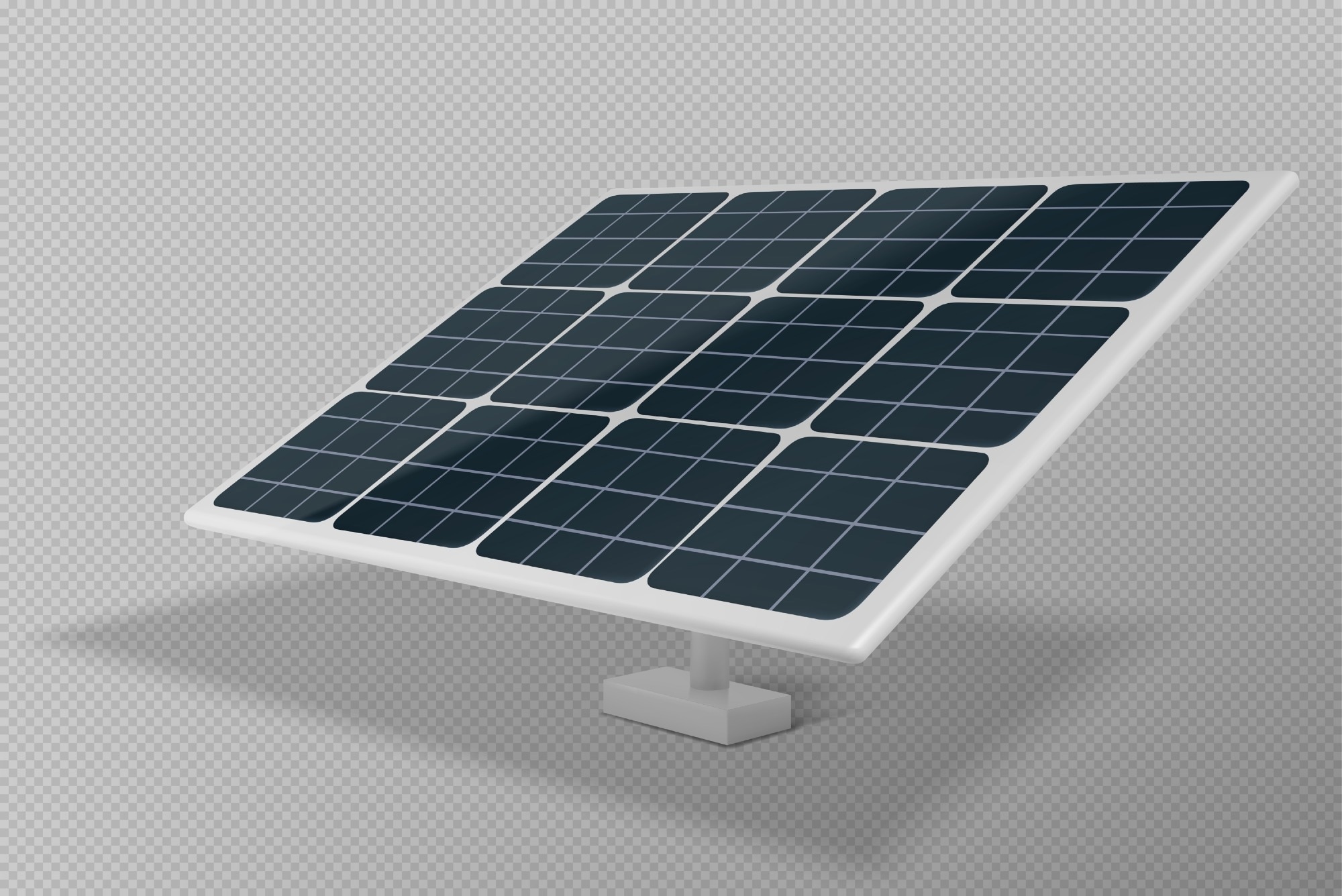Solar panels are one of the most popular forms of renewable energy. Individual households and businesses are increasingly using them to produce some of their electricity, particularly in countries wanting to reduce their reliance on fossil fuels and move towards clean energy.

Image Credit: Mark Agnor/Shutterstock.com
At the core of commercial solar panels are photovoltaic (PV) cells - devices that convert solar energy into an electrical voltage. These are constructed from several layers of materials, each with a specific set of properties suited to its job.
Advances in the materials used in PV cells will push the efficiency and cost of solar panels down and ultimately help the application of solar panels to become more widespread across domestic, industrial, and grid-level applications.
The main aims of R&D for PV technologies are:
- Increase the light absorption rate.
- Increase the efficiency of the photovoltaic effect.
- Decrease the cost of manufacturing.
- Make PV cells adaptable to different scales and localities.
Three Generations of Solar Panels
Photovoltaic technology has been categorized into three distinct generations, which mark step shifts in the materials and manufacturing techniques used to make the cells.
The first generation of solar cells uses very high-quality crystalline silicon. These are expensive to manufacture and have a fairly low theoretical efficiency limit of around 33%.
Second-generation PV cells use thin film technologies with other semiconducting materials such as cadmium telluride (CdTe) and copper indium gallium selenide (CIGS). These materials can significantly reduce processing costs and promise higher theoretical efficiencies than silicon-based PV materials.
Third-generation PV is a much broader group of technologies, all of which are emerging or in the development phases. Technologies often considered part of this third-generation include quantum dots, nanostructured semiconductors, and amorphous silicon.
The Role of Nanotechnology in Solar Energy
Nanotechnology is increasingly being employed in the field of renewable energy. Different nanomaterials can help with the design and manufacture of second-generation PV cells. However, it is in the third generation of solar cell technologies that the role of nanotechnology in solar energy comes into its own.
In this emerging field of solar power generation, novel technologies such as nanowires, quantum dots, and radial junctions are some of the research subjects as scientists seek to push the upper limits of PV efficiency.
Nanostructures can also allow efficient solar cells to be made from cheaper, more conventional materials, like silicon and titanium dioxide. Although there will be cost barriers involved in developing mass-production techniques for nano-enhanced PV cells, using cheaper raw materials will allow the cost of commercial solar cells to continue to decrease.
Recent Advances in Solar Panel Nanotechnology
A Solar Panel That Can “Spread Like Paint”
Researchers at the University of California, Berkeley, have developed a new solar panel technology that can produce a spreadable PV material. Nanotechnology is at the center of this novel and innovative renewable energy technology.
Able to be integrated with conventional building materials, the technology also promises to potentially drive down the production costs of solar PV cells, making them a cheap and widely used green energy alternative.
The technology employs electrically conductive polymers. While research using these innovative materials has shown great potential, researchers have struggled with optimizing their efficiency thus far. To solve this central issue, the team behind the new technology employed nanorods.
Nanorods are inorganic semiconducting crystals, bar-like in structure and measuring around 7x60 nm. By utilizing these innovative nanomaterials, the researchers at Berkeley manufactured an inexpensive and flexible material with comparable efficiency to conventional silicon solar cells.

Image Credit: klyaksun/Shutterstock.com
Printable Ultrathin Solar Cells
Turning any surface into a possible renewable energy source is one of the most intriguing potentials of the growing use of nanotechnology in solar energy. Not only buildings can be used to generate power: sailboats, tents, and even clothes could be sources of electricity using nanotechnology.
A team at MIT published a paper in Small Methods in 2022 outlining new research to produce this innovative green technology. Exploring the potential of previous research in 2016 into ultra-thin lightweight materials that could sit on top of a soap bubble, the researchers have produced a new type of printable solar PV cell.
Using screen printing, the authors deposited an electrode using printable nanomaterial electronic inks onto a 3-micron thick with slot-die coated layers of electronic materials. Once fully prepared, the finished ultralight and ultra-thin solar device is peeled off the substrate.
To solve the problem of fragility that is a hallmark of ultrathin, freestanding modules, the team used an incredibly strong and lightweight commercial composite fabric known as Dyneema to attach the solar device, too. Dyneema ropes were used to lift the Costa Concordia from the bottom of the Mediterranean Sea.
The device manufactured by the researchers is highly efficient, durable, and flexible, but there is still an issue with environmental degradation. The team is currently investigating ultrathin packaging solutions to overcome this technical challenge.
Nanotechnology in Solar Energy: The Future
In the field of renewable energy, solar power is an increasingly attractive option. Whilst the potential for power generation from the sun is limitless, the high manufacturing costs associated with solar panels coupled with efficiency issues still make them a challenging investment.
The potential of nanotechnology in solar energy has been extensively explored in recent years, and whilst there are still barriers to manufacturing nanomaterials that could lift current PV efficiency limits, some companies are beginning to commercialize nano-enhanced solar panels.
With the current rate of development, solar power is likely to break out of its current relatively niche markets and gain a substantial share of the world energy market.
References and Further Reading
Scigliano, E (2021) Nano Solar Cells [online] MIT Technology Review. Available at: https://www.technologyreview.com/technology/nano-solar-cells/
Zew, A (2022) Paper-thin solar cell can turn any surface into a power source [online] MIT News. Available at: https://news.mit.edu/2022/ultrathin-solar-cells-1209
Saravanapavanantham, M, Mwaura, J & Bulović, V (2022) Printed Organic Photovoltaic Modules on Transferable Ultra-thin Substrates as Additive Power Sources Small Methods 7:1, 2200940 [online]
"What is the role of Nanotechnology in the Photovoltaic Industry?" - Prometheus Institute
"Taking Solar Technology Up a Notch" - Northwestern University News Center
New Energy Technologies - SolarWindow™
Disclaimer: The views expressed here are those of the author expressed in their private capacity and do not necessarily represent the views of AZoM.com Limited T/A AZoNetwork the owner and operator of this website. This disclaimer forms part of the Terms and conditions of use of this website.